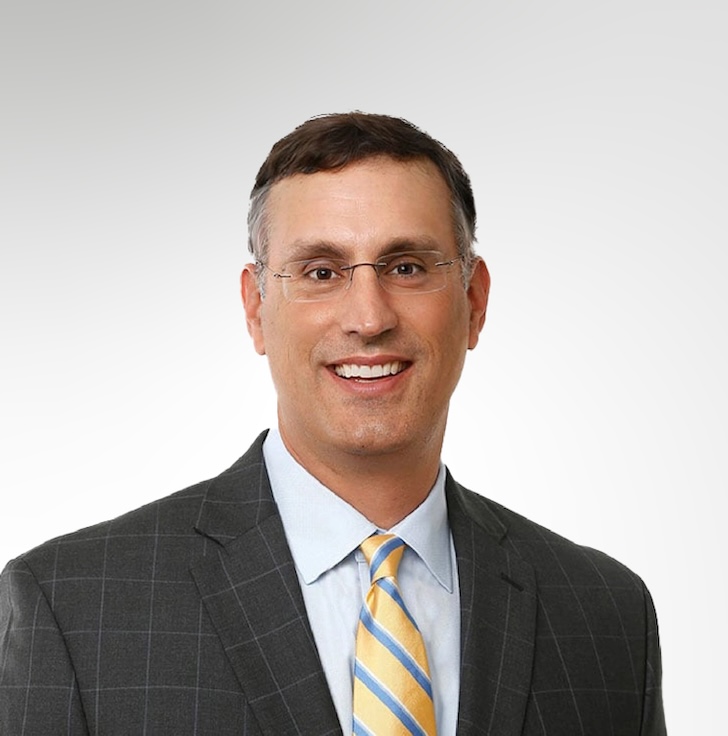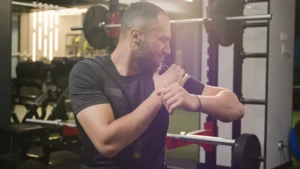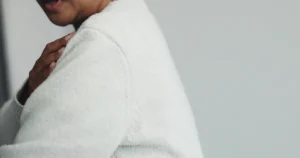Patients often ask ‘How long is physical therapy after reverse shoulder replacement?’ The answer typically lies between three to six months. This post cuts through the clutter to present you with a straightforward recovery roadmap, mapping out each step and what progress looks like along the way to full shoulder function restoration.
Key Takeaways
- Recovery time from reverse shoulder replacement spans 4 to 9 months with physical therapy typically lasting 3 to 6 months, but complete recovery can extend up to a year, depending on individual factors.
- Initial physical therapy focuses on gentle range of motion exercises to reduce pain and prevent stiffness, with the use of a sling recommended for the first 4 weeks post-operation.
- Advanced rehabilitation includes active strengthening exercises around 6-12 weeks post-surgery to improve deltoid function and restore motion for daily activities, with long-term care involving a home exercise program and regular check-ups.
Understanding the Timeline of Physical Therapy Post-Reverse Shoulder Replacement
Having a clear understanding of your recovery timeline can make the journey seem less daunting. Generally, recovery from reverse shoulder replacement surgery spans between 4 to 9 months, with the typical duration of physical therapy ranging between 3 to 6 months. However, it’s important to remember that everyone’s recovery timeline is unique. Factors like the complexity of your surgical procedure and the personalized recovery plans devised by your orthopedic shoulder surgeon and physical therapist can influence your individual recovery times.
During those early sessions of physical therapy, the focus is primarily on pain management, reducing swelling, and regaining range of motion. While formal physical therapy can wrap up in a few months, complete recovery may extend up to a year. Adherence to your rehabilitation plan and consistency with your exercises are crucial to expedite the process. So, as you embark on this journey, remember that every step you take brings you closer to a life potentially free of shoulder pain.
The Initial Weeks: Setting the Foundation for Recovery
The initial weeks post-surgery lay the groundwork for your recovery. During this period, it’s recommended to:
- Adhere to the post op instructions provided the day of surgery
- Begin physical therapy a day or two after surgery with exercises like pendulum swings, and elbow and gripping exercises to prevent stiffness in the elbow, wrist, hand, and shoulder
- It’s recommended to exercise for 10 to 15 minutes, two or three times a day
The early goals of physical therapy are focused on reducing pain and inflammation, as well as initiating early movement in the wrist, hand, elbow, and shoulder. This approach aims to facilitate recovery and prevent further complications. However, every silver lining has a cloud. Navigating life with your new shoulder implant can be challenging, especially in the initial weeks. But luckily, there’s a tool that can make this easier – a shoulder sling.
Sling Support: Navigating Life with Your New Shoulder Implant
A sling is more than just a support tool; it’s your shoulder’s best friend during the initial recovery period. Patients are generally advised to use a sling for 4 weeks post-operatively to protect the new shoulder joint. But don’t fret! You won’t be stuck in a sling all day. While it’s recommended to wear the sling during public appearances or movement, you can loosen it during stationary activities such as reading or watching television to maintain a degree of comfort.
So, with a little help from the sling, navigating life with your new shoulder implant is a breeze.
Gentle Beginnings: Passive Range of Motion Exercises
In the initial 4 weeks of rehabilitation, focusing on passive shoulder movements is crucial to maintain joint mobility and aid recovery. During the first month of physical therapy, passive range of motion exercises for the shoulder are emphasized to prevent exerting strain on healing muscles and tendons. Consistency in performing these passive exercises is important to avoid stiffness, which can lead to pain and impair the mobility of the joint. Some examples of passive range of motion exercises for the shoulder include:
- Pendulum exercises
- Wand exercises
- Table slides
As you become more comfortable with these exercises, you’re ready to step into the next phase of your recovery journey – building strength and flexibility.
Building Strength and Flexibility: The Next Phase of Physical Therapy
As you transition into the second phase of your rehabilitation journey, spanning from weeks 4 to 12, the focus shifts towards active strengthening exercises. During this phase, light weights and resistance bands are incorporated into your physical therapy sessions to gradually enhance your shoulder’s strength. These exercises aim to gain sufficient shoulder range of motion and strength to perform activities of daily living, thereby improving your satisfaction post-reversal shoulder arthroplasty.
But strength-building isn’t just about lifting weights. A key aspect of this phase involves enhancing deltoid function, which is paramount for shoulder stability.
Enhancing Deltoid Function: Key Exercises for Stability
Improving deltoid function involves exercises like lifting the arm up in front of the body or to the side until parallel with the floor, followed by holding and lowering slowly. These exercises are crucial for enhancing the overall stability of the shoulder by strengthening the deltoid muscle.
Effective rehabilitation post-reverse shoulder replacement hinges on the adequate recruitment of the deltoid muscle and the rotator cuff to ensure better recovery of active motion and function. As you steadily build strength and flexibility, you’ll notice a gradual improvement in your daily activities.
Regaining Daily Independence: Exercises for Daily Living Activities
Physical therapy post-reverse shoulder replacement is centered on restoring your ability to perform functional activities, specifically tailored to your daily tasks and personal goals. Following reverse shoulder replacement surgery, most patients can perform essential tasks such as:
- Eating
- Reading
- Using a keyboard
- Dressing
within approximately one week.
But your journey doesn’t stop here. It’s time to take it to the next level with advanced rehabilitation.
Advanced Rehabilitation: Refining Movement and Increasing Activities
Advanced rehabilitation involves refining movement and increasing activities. Around 10-12 weeks post-surgery, during the advanced strengthening phase, you will focus on maintaining non-painful active range of motion while introducing advanced functional activities. To achieve this, deltoid strengthening exercises are essential as they help to properly seat the shoulder prosthesis and facilitate movement, contributing to joint stability.
Integral to advanced rehabilitation is performing exercises that restore motion and flexibility to the shoulder, which are necessities for full recovery post-surgery. One of the ways to safely increase the load on the shoulder while maintaining control during rehabilitation is through closed chain exercises.
Closed Chain Exercises: Promoting Safe, Controlled Movements
Closed chain exercises involve movements where the hand is fixed in a position and the body moves around it. These exercises are crucial for safely increasing the load on the shoulder while maintaining control during rehabilitation.
Wall crawls and other closed chain exercises help restore shoulder function by allowing you to engage the muscles around the shoulder in a stable and controlled manner.
As you continue to regain strength and control, you might start thinking about returning to your favorite recreational activities and sports. But how do you know when you’re ready?
Transitioning Back to Sports and High-Demand Activities
Gradual return to recreational activities and sports including golf is encouraged during the late phase of your advanced strengthening phase after reverse shoulder replacement. Noncontact and low-demand sports are generally more accessible for patients’ post-surgery, often leading to higher return rates than with contact sports or high-demand activities.
Tailoring Your Treatment Plan: When to Start Physical Therapy and How to Progress
A personalized treatment plan is essential in physical therapy for reverse shoulder replacement to manage symptoms, maintain mobility, and prevent further joint damage. Physical therapists develop individualized treatment plans, adjusting exercises to improve strength and range of motion for shoulder replacement patients. Physical therapy for a reverse shoulder replacement should begin immediately following the surgery to promote healing and stimulate circulation.
As the physical therapy progresses, treatment programs are tailored to heal and strengthen the body while aiming to reduce pain over time. Consistent communication with a qualified rehabilitation team is a key factor in a successful recovery from a total shoulder replacement surgery or a reverse shoulder replacement. Adhering to postoperative instructions and properly following the tailored treatment plan are crucial for achieving pain relief and functional improvement after surgery.
Working With Your Physical Therapist
Maintaining good communication with your physical therapist is crucial for a successful recovery from reverse shoulder replacement. After each physical therapy session, you’ll receive an updated home exercise program from your therapist to continue your recovery progress. But what happens if you experience pain following your physical therapy sessions?
If you experience pain following your physical therapy sessions, it’s important to report this to your physical therapist to address concerns and possibly adjust the treatment. In fact, consultation with a physical therapist is advised if you experience an increase in pain, new pain, or a loss of range of motion following your physical therapy.
Measuring Success: Tracking Improvement and Adjusting Goals
Physical therapists regularly monitor your recovery after a reverse shoulder replacement and adjust the treatment plan to align with your individual progress towards rehabilitation goals.
Incorporating early motion exercises into your rehabilitation program after reverse shoulder arthroplasty has been shown to facilitate a faster recovery and decrease the duration of post-operative immobilization.
Long-Term Care and Maintenance After Physical Therapy Ends
The end of formal physical therapy doesn’t mean the end of your recovery journey. Continuing a home exercise program is a critical aspect of long-term care after formal physical therapy ends. Additionally, patients are advised to adhere to a permanent weightlifting restriction of 30 pounds to protect the integrity of the shoulder replacement.
Regular check-ups play a vital role in monitoring the health of the shoulder joint and ensuring proper maintenance after the cessation of structured physical therapy, especially for those dealing with shoulder arthritis. But what does this long-term care look like in practice?
Continuing Home Exercise Program
Adhering to a home exercise program after shoulder replacement is crucial for maintaining shoulder health and preventing future issues. Some exercises that can be recommended for continued strengthening at home include:
- Elbow range of motion
- Grip strengthening
- Scapula retraction
- Supported arm pendulum
- External rotation
These at-home exercises should be tailored by your physical therapist as part of your recovery process after reverse shoulder replacement.
Summary
The journey to recovery after reverse shoulder replacement surgery can seem daunting. But with a comprehensive understanding of the rehabilitation process, from initial weeks of recovery to long-term care, this journey becomes much more navigable. Remember, every step you take, every exercise you perform, is a step towards a life free of shoulder pain.
A successful recovery requires dedication, patience, and a positive attitude. Your physical therapist is your guide on this journey, helping you navigate each stage of recovery. And while the journey may be challenging, the destination – a life with the opportunity of improved mobility and less pain – is well worth it.
Frequently Asked Questions
Is physical therapy necessary after reverse shoulder replacement?
Yes, physical therapy may be necessary after reverse shoulder replacement. The therapy typically starts with passive exercises and progresses to active movements and weights.
How long does physical therapy last after reverse shoulder replacement?
Physical therapy after reverse shoulder replacement usually lasts around 3-6 months, with complete recovery taking up to a year.
What is the role of a sling post-surgery?
After surgery, a sling is used for 4 weeks to protect the new shoulder joint and ensure comfort during stationary activities. This ensures proper healing and reduces the risk of complications.
When can I return to sports after surgery?
You can return to sports during the late phase of your advanced strengthening phase after reverse shoulder replacement. It’s crucial to gradually ease back into recreational activities and sports. It typically takes five months to return to golf and tennis.
What should I do if I experience pain following my physical therapy sessions?
You should report the pain to your physical therapist so they can address your concerns and possibly adjust your treatment.




